
A winter storm system will rapidly intensify over the Midwest on Sunday and track through the Great Lakes on Monday. Periods of heavy snow are anticipated across the Upper Great Lakes late Sunday and continuing into Monday. At least 1/10 inch of ice accumulation is expected from a wintry mix across much of the interior Northeast U.S. starting Sunday afternoon. Read More >
|
Take a moment to learn more about extreme heat safety and preparedness! What is a heat wave? A heat wave is a period of abnormally hot weather generally lasting more than two days. Heat waves can occur with or without high humidity. They have potential to cover a large area, exposing a high number of people to hazardous heat. Heat is the leading weather-related killer in the United States, resulting in hundreds of fatalities each year. Heat can be very taxing on the body and can lead to heat-related illnesses. Everyone can be vulnerable to heat, but some more so than others. |
|
|
National Weather Service Extreme Heat Alerts NWS offices collaborate with local partners to determine when an alert should be issued for a local area. For instance, following the deadly 1995 heat wave, the Chicago NWS office and the City of Chicago worked together to develop an impact-based extreme heat criteria specific to the City of Chicago and Cook County to enhance the warning communication for future heat waves. |
|
|
Heat Advisory—Take Action! A Heat Advisory is issued for dangerous heat conditions that are not expected to reach warning criteria. |
Extreme Heat Watch—Be Prepared! An Extreme Heat Watch is issued when conditions are favorable for an extreme heat event but its occurrence and timing is still uncertain. |
Extreme Heat Warning—Take Action! An Extreme Heat Warning is issued when extremely dangerous heat conditions are expected or occurring. |
|
NWS Chicago Extreme Heat Headline Criteria |
||
|
Heat Advisory |
Extreme Heat Watch |
Extreme Heat Warning |
|
Areawide: The following condition is expected to occur: One day with a forecast peak heat index of 105°F or higher
*An upgrade to an Extreme Heat warning may be considered if Heat Advisory conditions occur for 4 or more consecutive days |
Chicago/Cook County: There is increasing potential that one of the following conditions may occur: Three consecutive days with a forecast peak heat index of 100-105°F OR Two consecutive days with a forecast peak heat index of 105-110°F OR One day with a forecast peak heat index of 110°F or higher |
Chicago/Cook County: One of the following conditions is expected to occur: Three consecutive days with a forecast peak heat index of 100-105°F OR Two consecutive days with a forecast peak heat index of 105-110°F OR One day with a forecast peak heat index of 110°F or higher |
|
Elsewhere: There is increasing potential that both of the following conditions may occur: One day with a forecast peak heat index of 110°F or higher AND A forecast minimum heat index of 75°F or greater for at least 48 hours |
Elsewhere: Both of the following conditions are expected to occur: One day with a forecast peak heat index of 110°F or higher AND A forecast minimum heat index of 75°F or greater for at least 48 hours |
|
| Criteria for all NWS Chicago Warnings, Watches, and Advisories | ||
|
Heat Safety Stay Cool. Stay Hydrated. Stay Informed. |
|
|
|
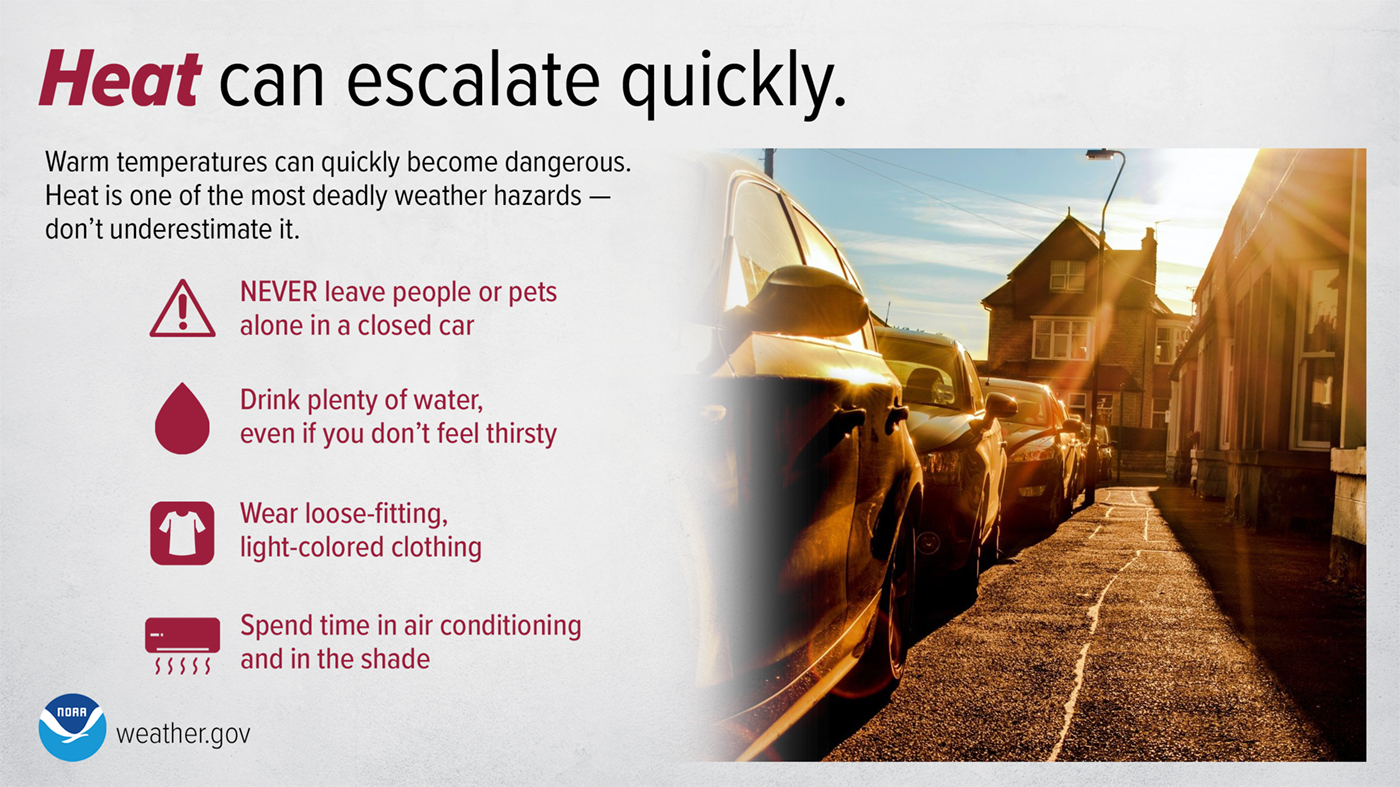 |
| Know the dangers of Extreme Heat and what you can do! | Heat can escalate quickly during the day! |
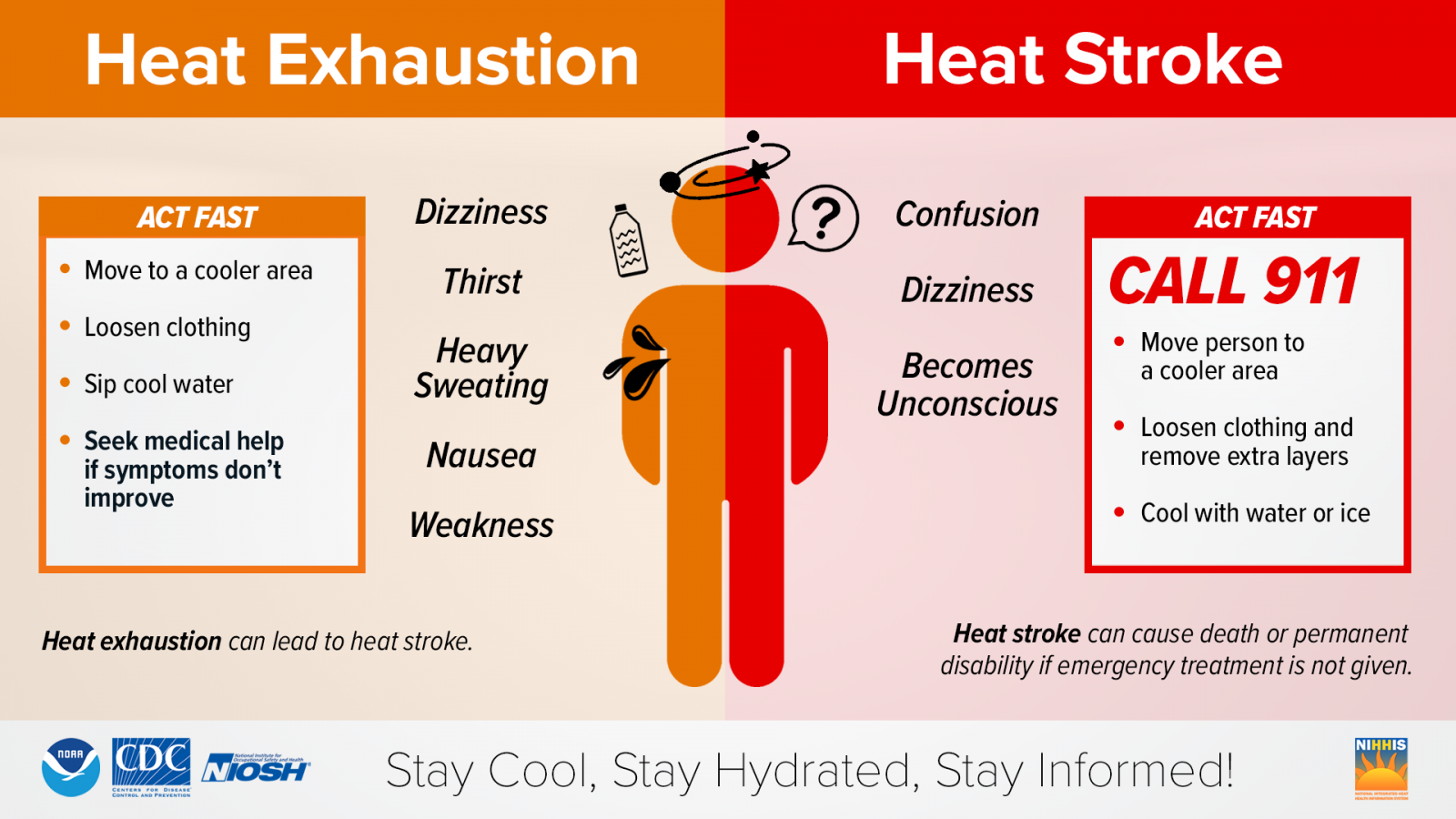 |
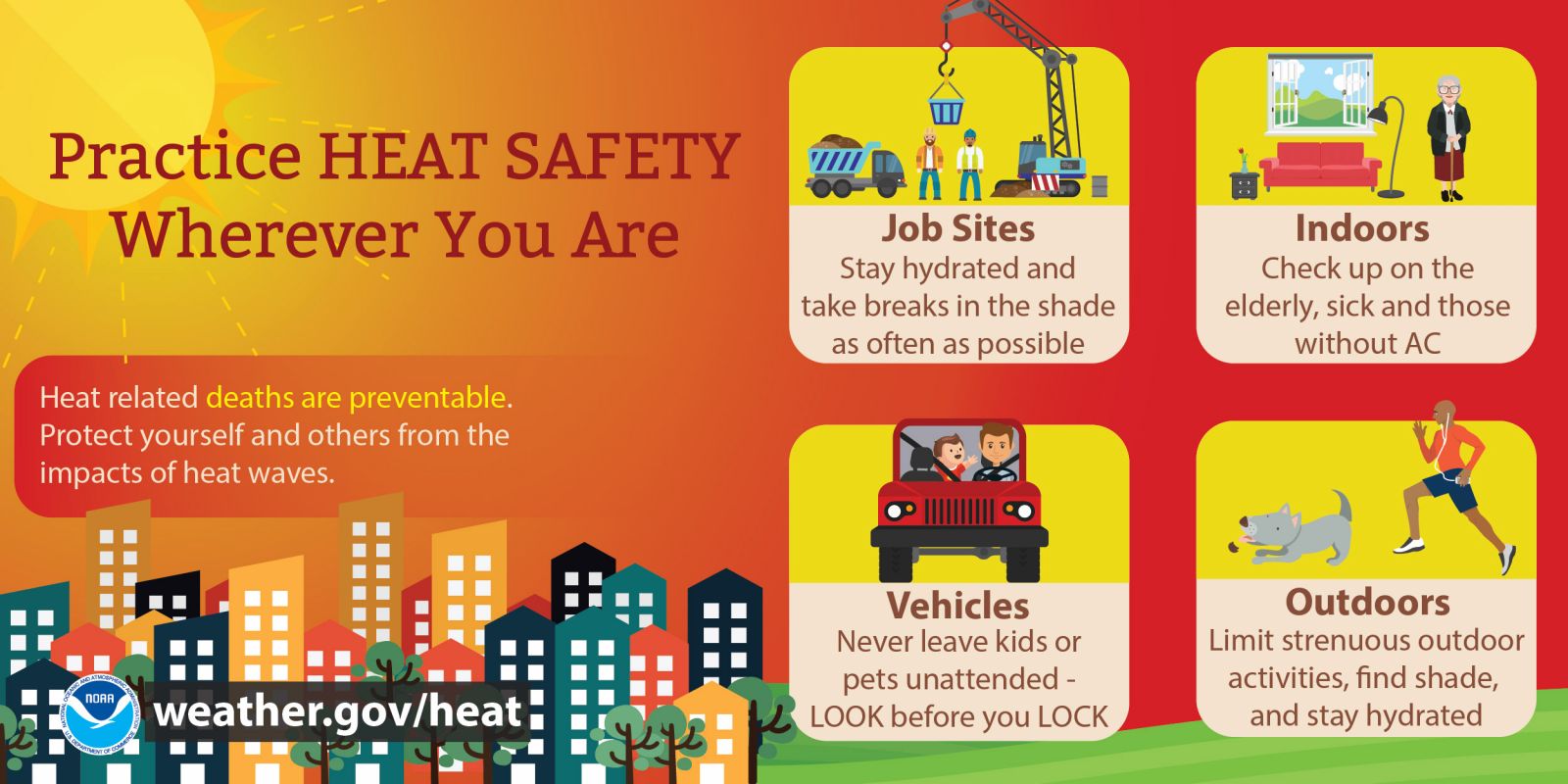 |
| Stay Weather-Ready by learning the symptoms of Extreme Heat exposure and the appropriate responses. | During a heat wave, practice heat safety wherever you are. Heat-related deaths and illnesses are preventable! |
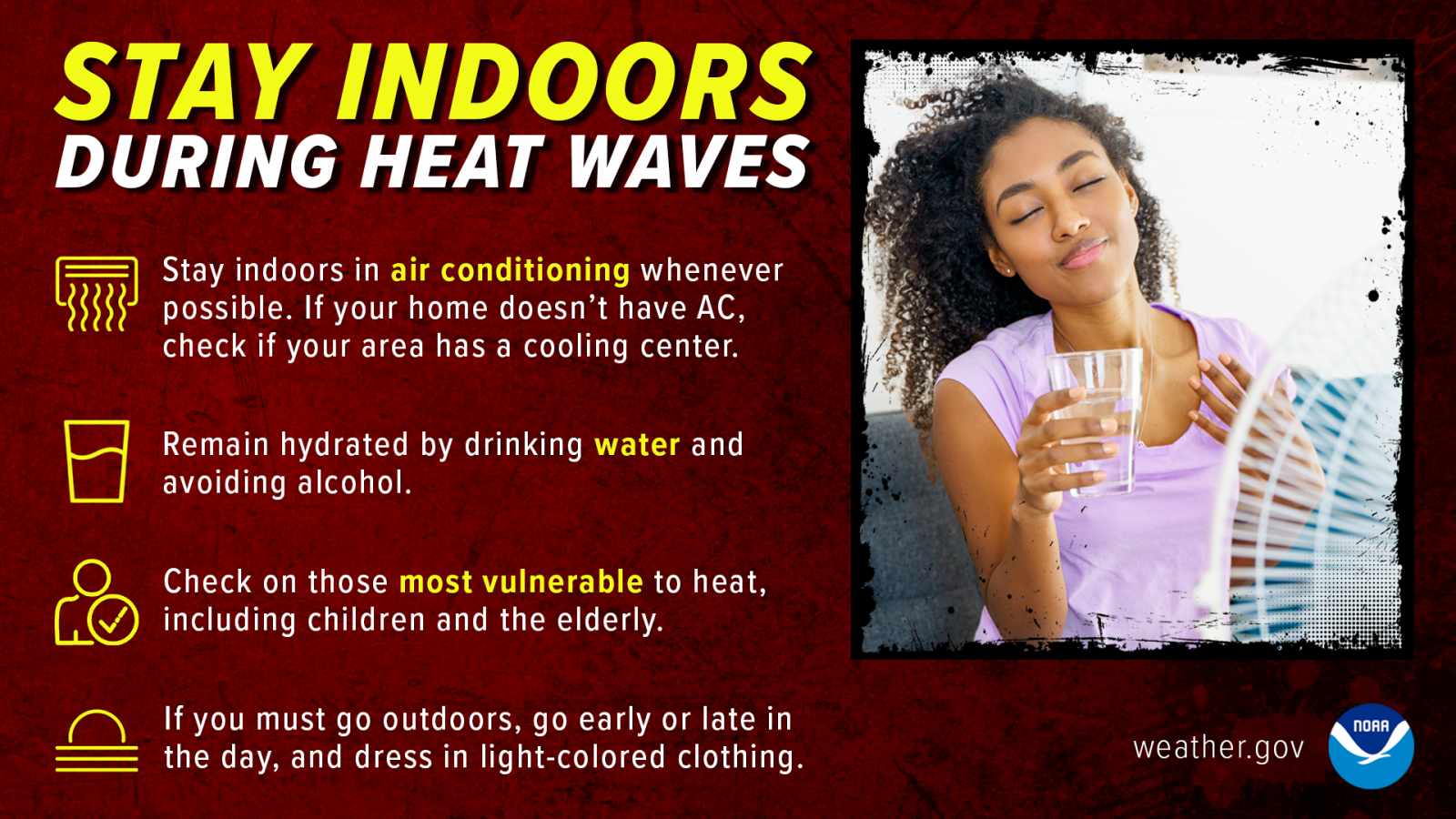 |
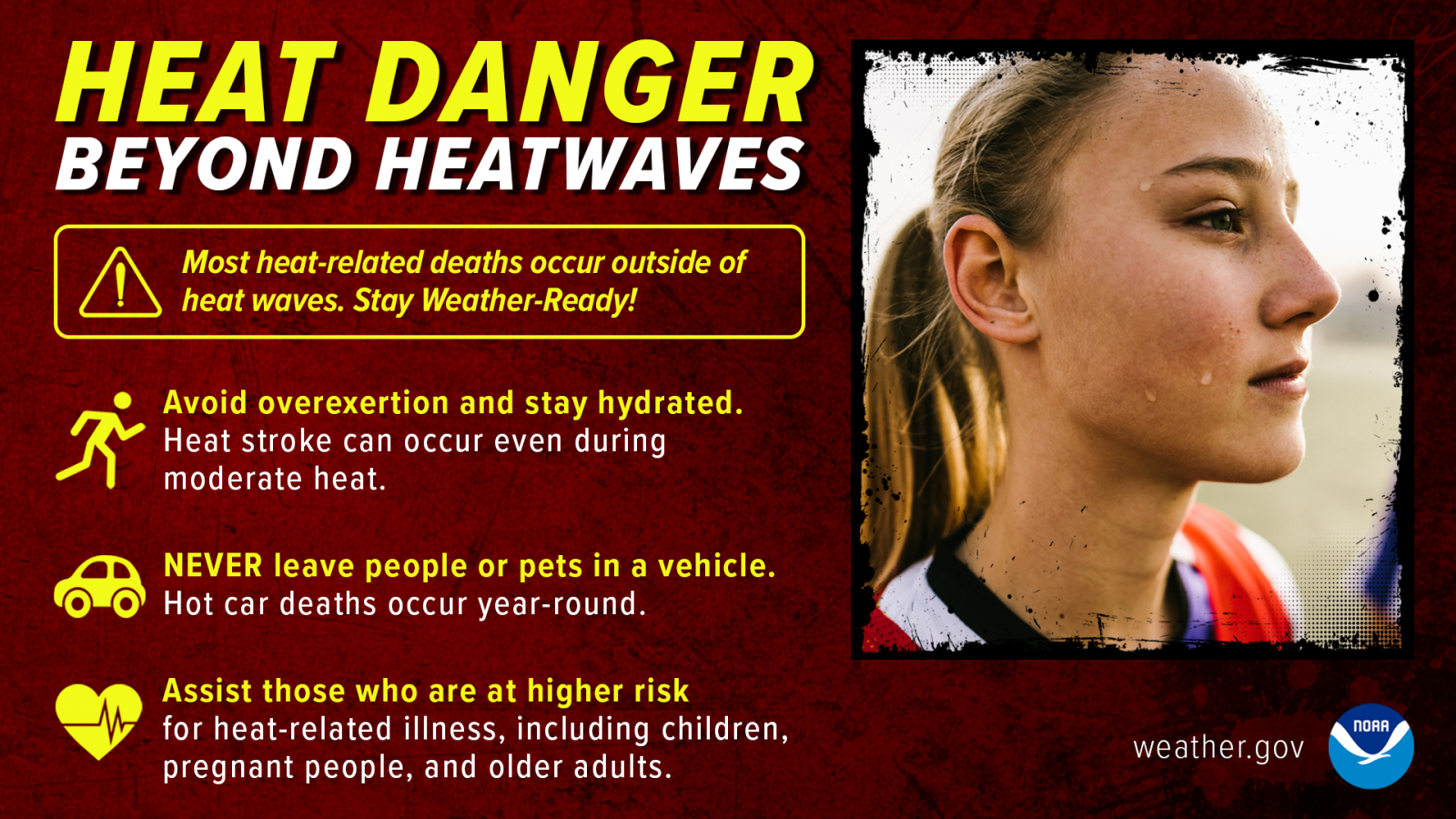 |
| During a heat wave, stay indoors in air conditioning if you can. | Heat can be a deadly weather hazard, even outside of heat waves. Don’t let your guard down in typically cooler seasons. |
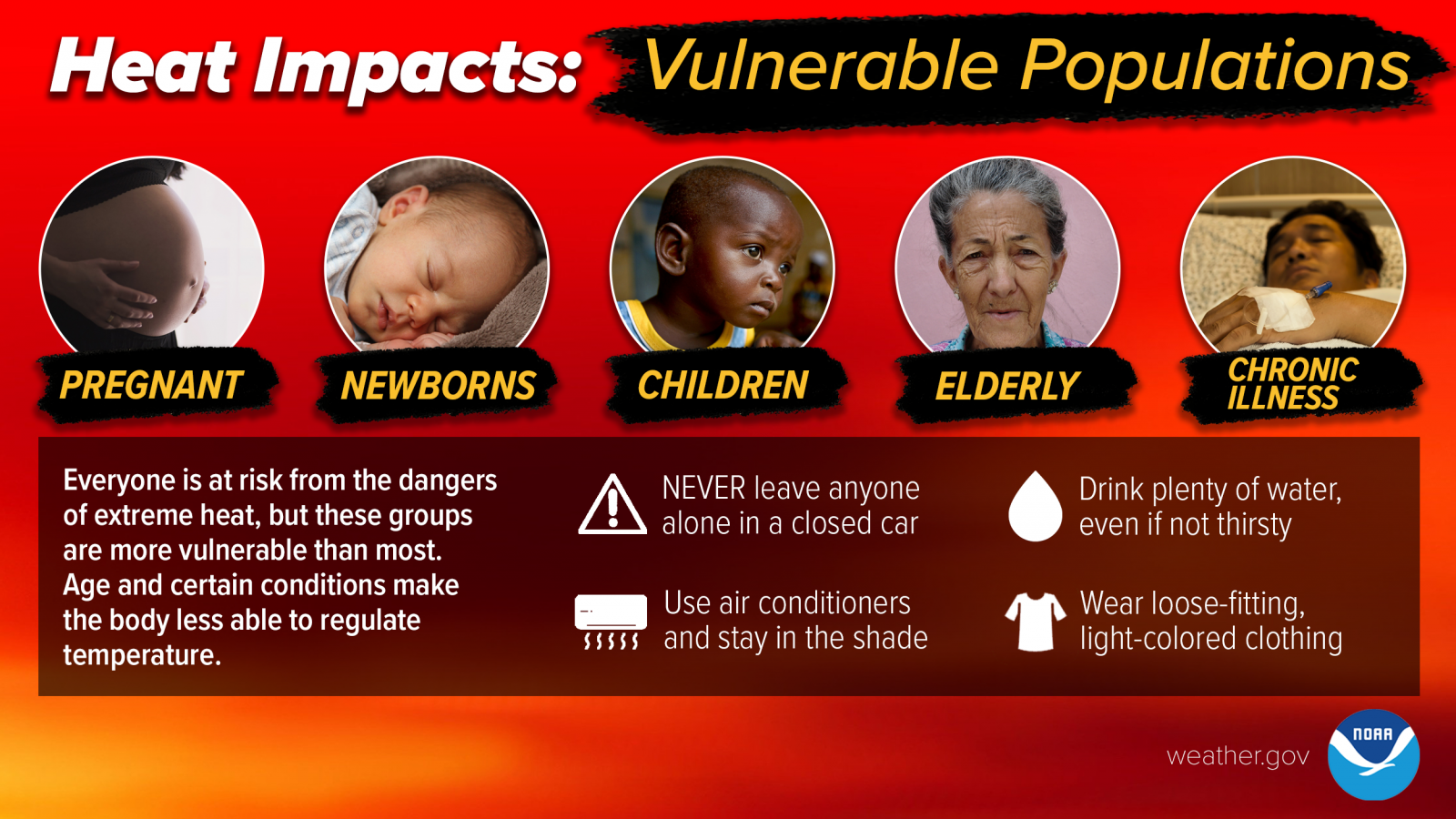 |
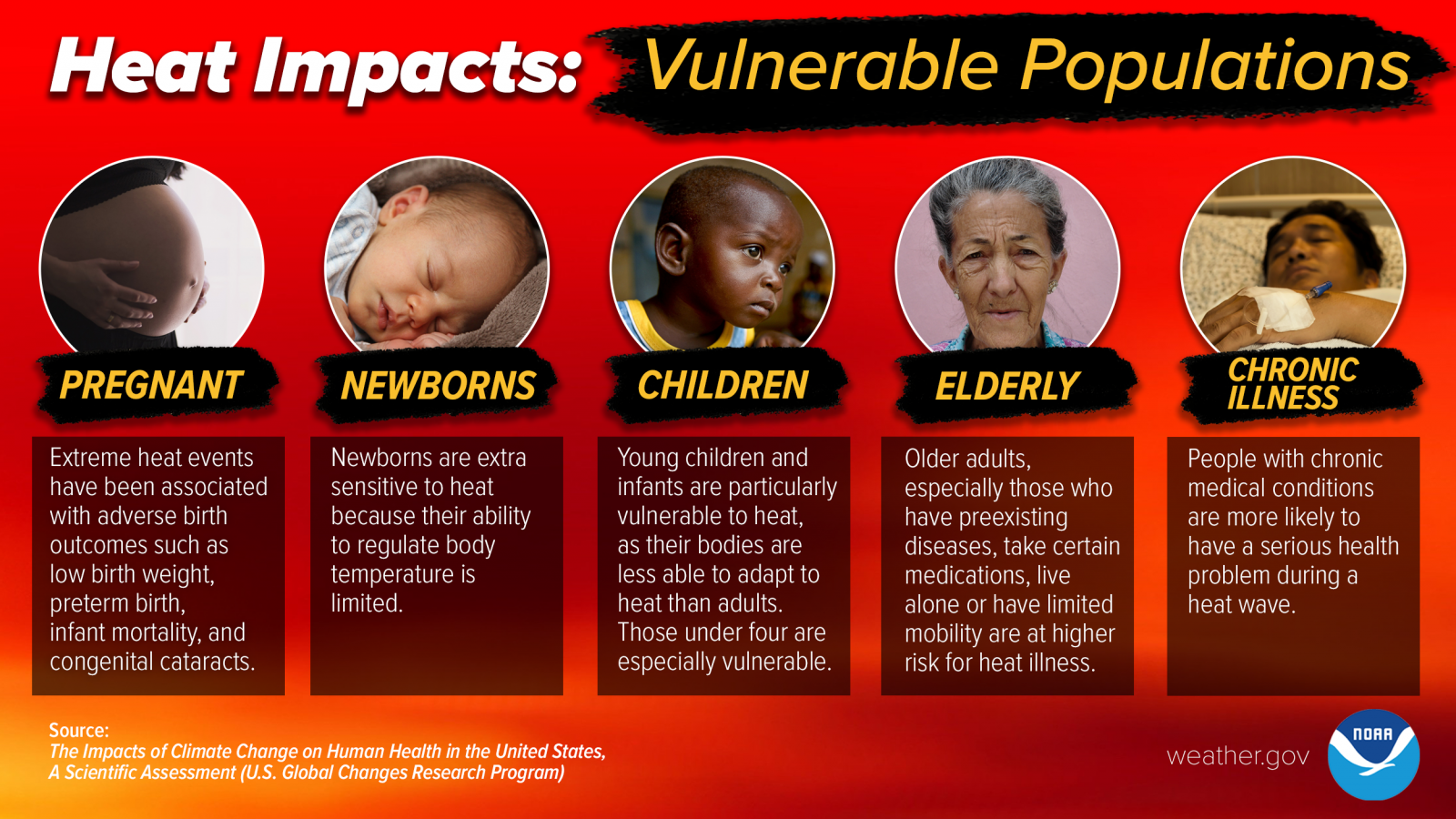 |
| Everyone can be vulnerable to heat, but some more so than others. | The above groups are particularly vulnerable to heat. Check in with friends and relatives who fall in one of these populations, especially if they don’t have air conditioning. |
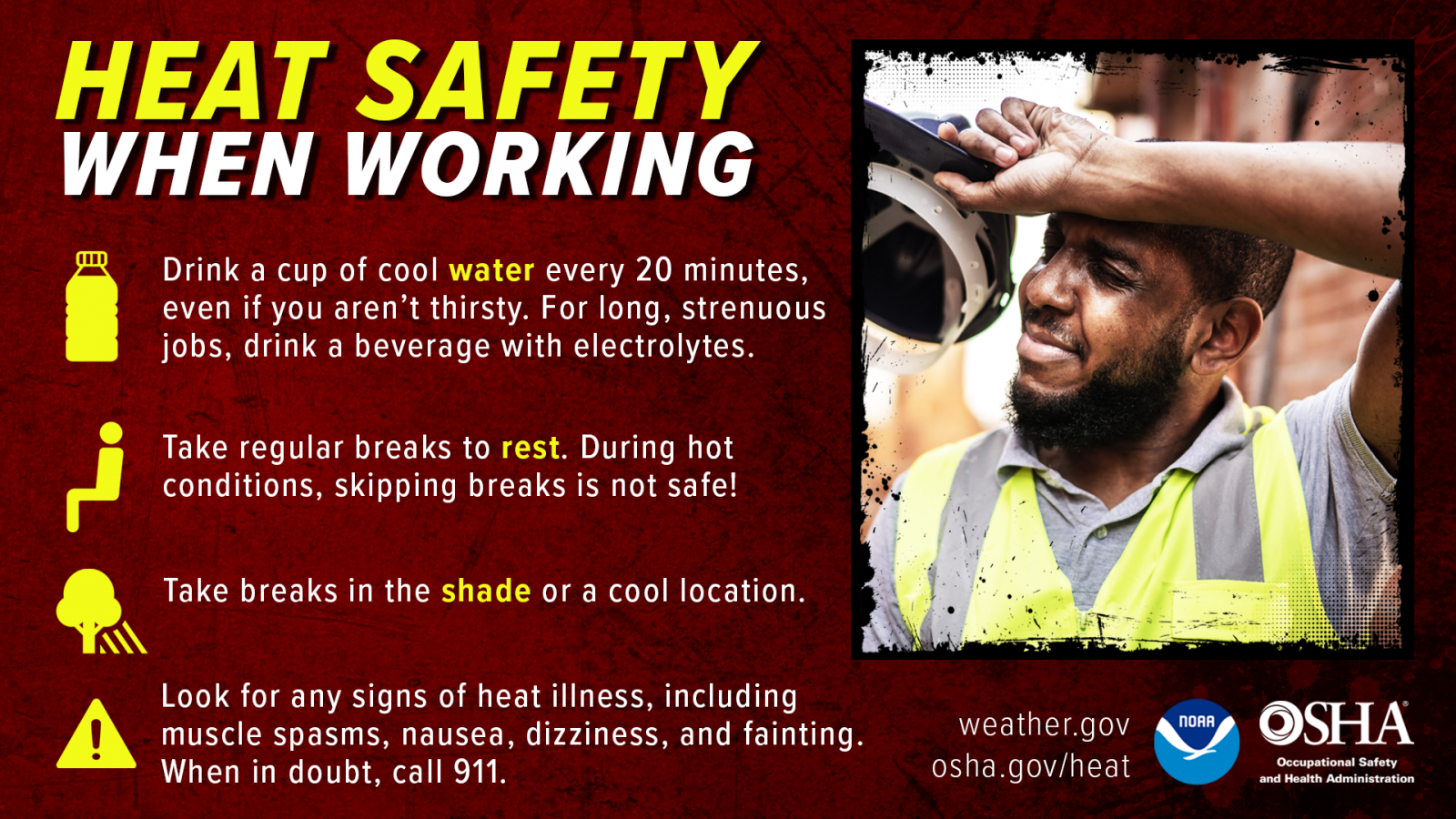 |
.png) |
| Outdoor workers can be at a higher risk from the effects of Extreme Heat. When working in the heat, take frequent breaks and stay hydrated! | A power outage during Extreme Heat can be dangerous – these strategies can help you keep cool when the power goes out. |
|
Vehicle Safety in the Heat It is NEVER safe to leave children, pets, or other vulnerable persons locked in a car! |
|
|
|
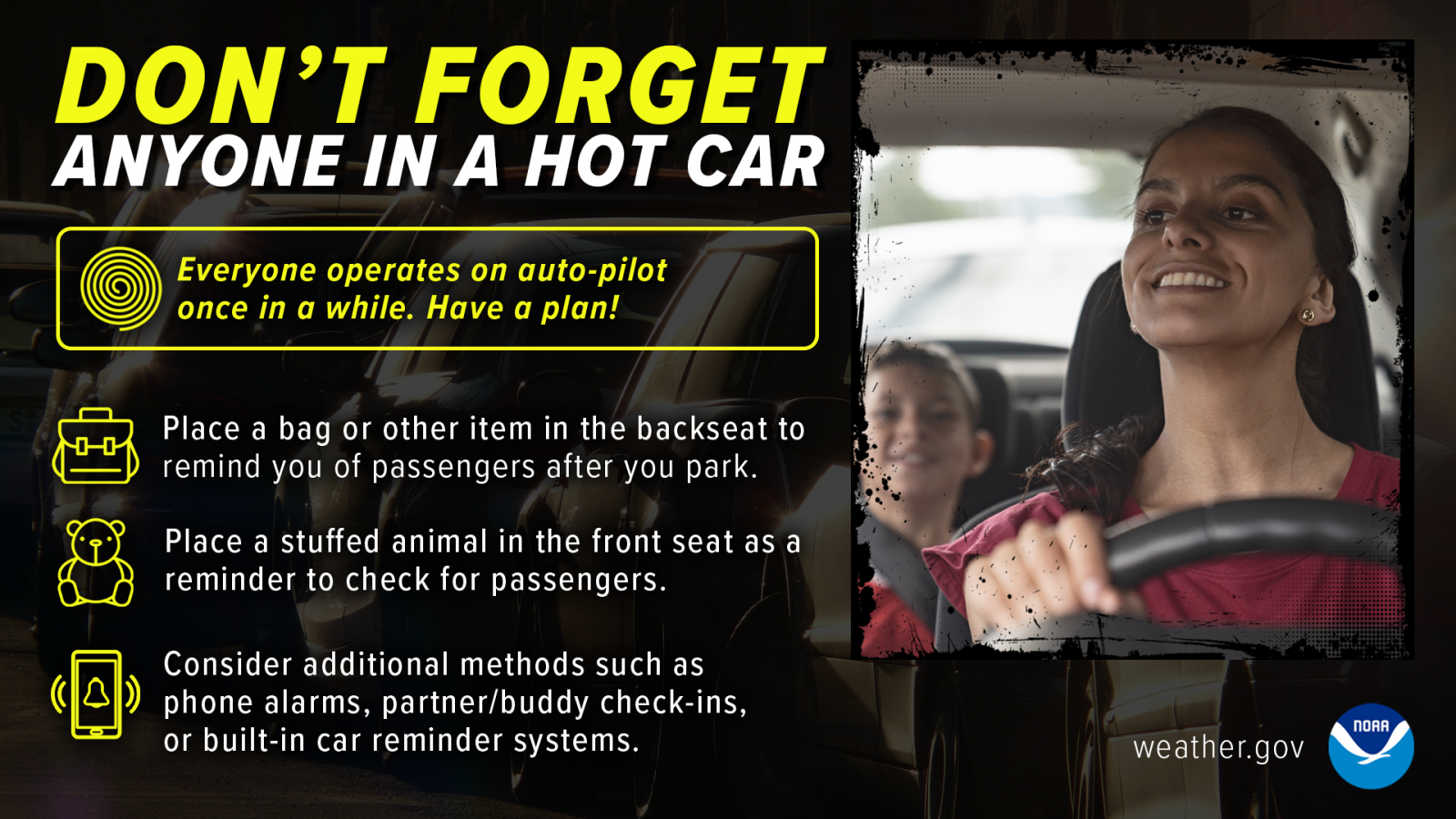 |
| Children should NEVER be left in a car, no matter the time of year. Vehicular heatstroke has occurred when outside temperatures are below 70°F - sunlight can cause the inside of a car to heat up VERY quickly. | Everyone operates on auto-pilot once in a while. Caregivers should have a strategy to ensure that no one is ever forgotten in a hot car. |
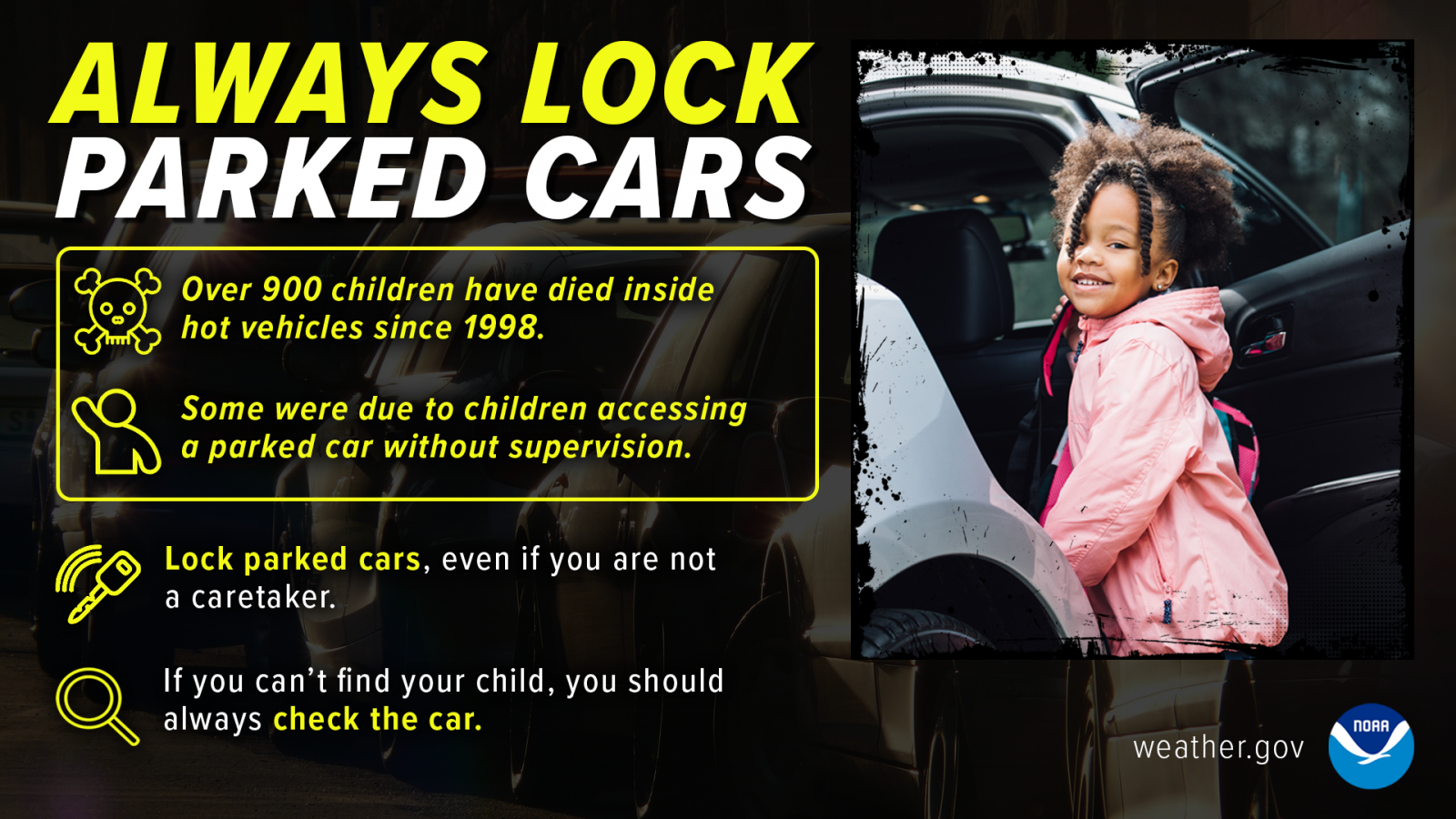 |
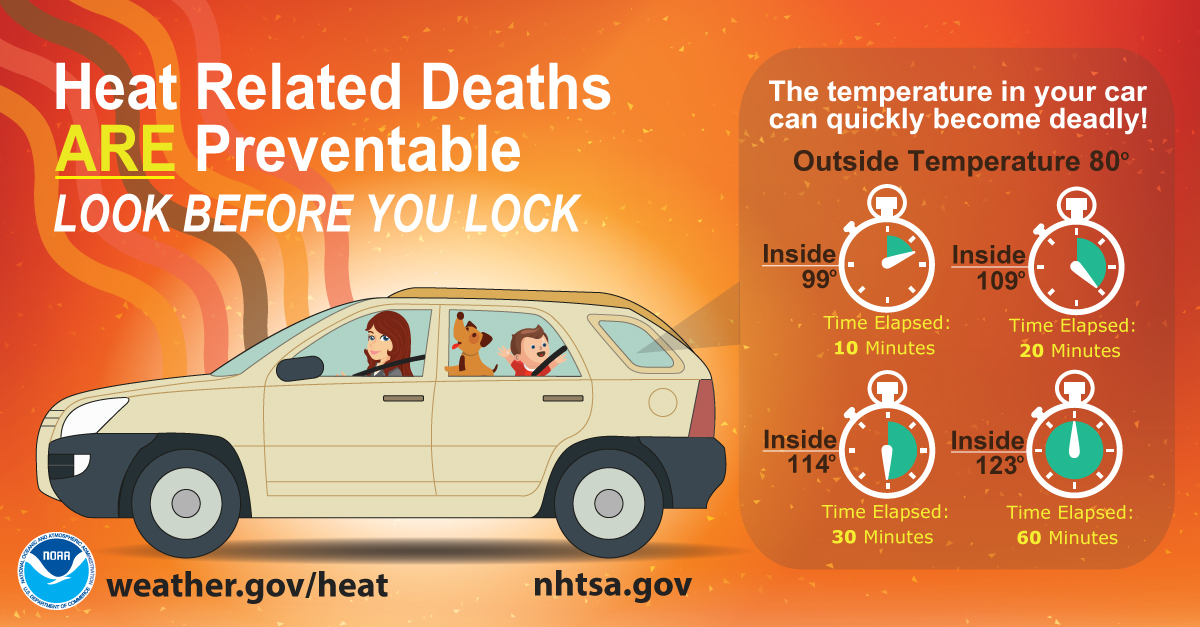 |
| Always lock parked cars, even if you are not a caregiver. | Look before you lock! The temperature in a car increases quickly! |
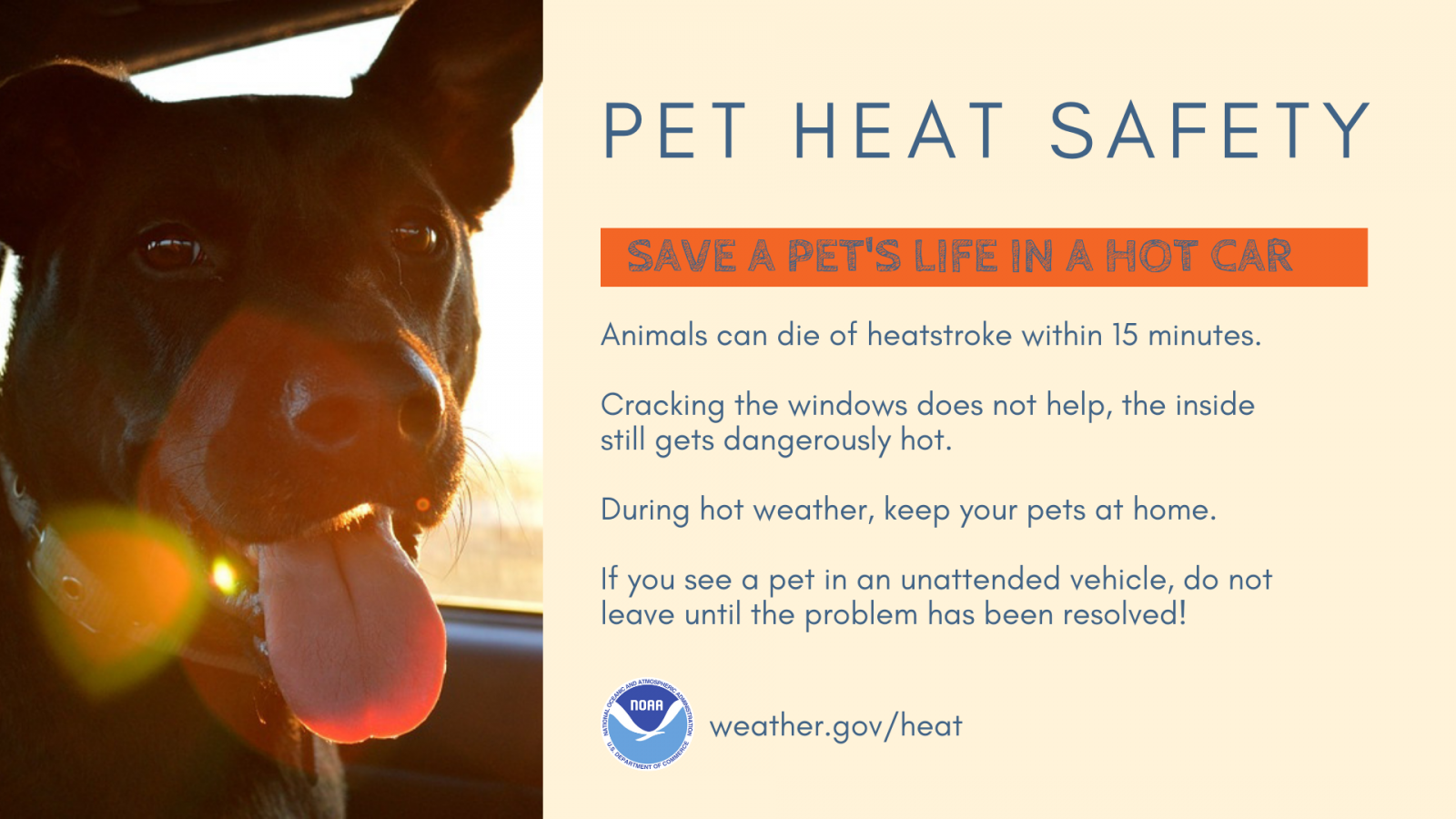 |
|
| Don't forget your pets! Cracking the window doesn't help! | |
| Urban Heat Island | |
|
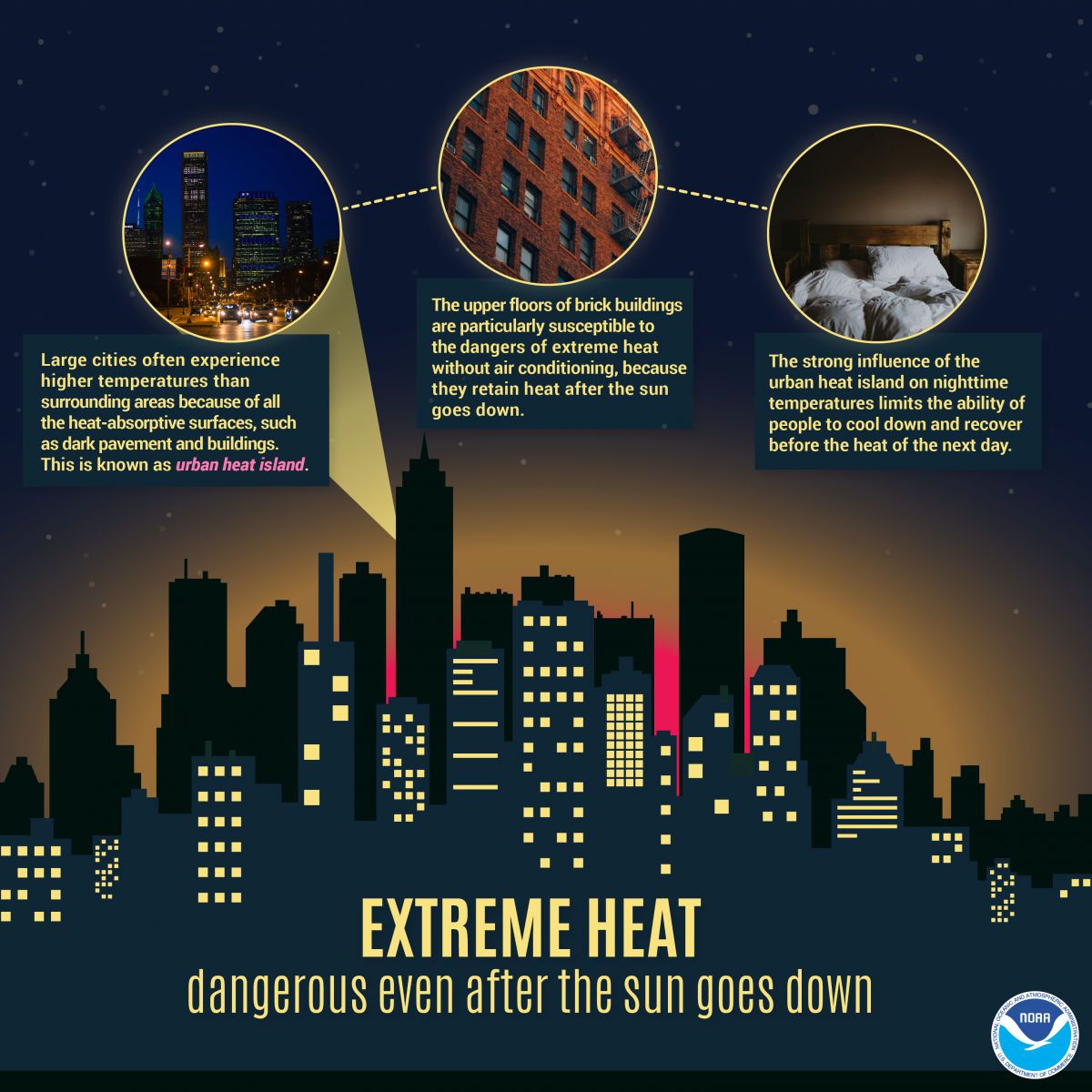 |
| Heat Forecast Tools | |
|
Heat Index The Heat Index is a measure of how hot it really feels when relative humidity is factored in with the actual air temperature. To find the Heat Index temperature, look at the Heat Index Chart to the right or check our Heat Index Calculator. As an example, if the air temperature is 96°F and the relative humidity is 65%, the heat index -- how hot it feels -- is 121°F. The red area without numbers indicates extreme danger. Since heat index values were devised for shady, light wind conditions, exposure to full sunshine can increase heat index values by up to 15°F. Also, strong winds, particularly with very hot, dry air, can be extremely hazardous. |
|
|
Wet Bulb Globe Temperature (WGBT) WBGT uses temperature, humidity, wind, solar radiation, and other weather parameters. It’s a particularly effective indicator of heat stress for active populations such as outdoor workers and athletes. WBGT can be used to inform activity modifications during exercise or outdoor work. For instance, The American College of Sports Medicine bases its guidelines for the intensity of sport practices on WBGT, and it is therefore utilized by athletic programs in many school districts. The Occupational Safety and Health Administration (OSHA) recommends protective measures for outdoor work:
|
For more information: |
|
NWS HeatRisk The NWS HeatRisk is an experimental color-numeric-based index that provides a forecast risk of heat-related impacts to occur over a 24-hour period. HeatRisk takes into consideration:
This index is supplementary to official NWS heat products and is meant to provide risk guidance for those decision makers and heat-sensitive populations who need to take actions at levels that may be below current NWS heat product levels. |
You can access the NWS HeatRisk at the following link: www.wpc.ncep.noaa.gov/heatrisk/
|
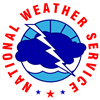 |
Media use of NWS Web News Stories is encouraged! Please acknowledge the NWS as the source of any news information accessed from this site. |
 |